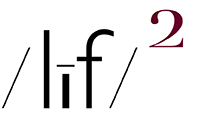THE QUESTION OF THE MOMENT, HERE ON THIS BLOG, IS REGARDING why does it matter if people, given a choice between a photograph and painting of the exact same referent, choose the painting almost every time.?
Simple answer, it doesn't matter at all ... unless, of course, a picture maker has tied their income wagon to the idea of selling prints. Then it matters very much.
I know a few picture makers who have made some decent bucks-including me when I was serious about doing it-selling their prints. Not enough bucks to make their living doing so but enough to make it well worth the time and effort to do so. And then there are the big-name fine-art picture makers whose prints sell for crazy big money but, a surprising number of them have jobs, for instance, as college professors (primarily for healthcare and retirement benefits).
In any event, it still astonishes me that, 200 years, aka: 2 centuries, after photography appeared on the scene so few people appreciate / view photography as an art.
iMo, that is because most people, when viewing a photograph, only see the depicted referent. The referent is the thing to the point of it being the only thing. If they have an interest in what is depicted, they might like the picture enough to spend a little time looking at it. However, judging from what I have seen at art / craft fairs, even then, in most cases they don't like it enough to spent money on it. And, if the referent doesn't interest them, they certainly are not interested in viewing the picture at all.
And, I also believe that the exact same situation as described in the preceding paragraph applies to most "serious" picture makers. They are as referent-obessed as the general public. Both in their picture making and in those pictures-made by others-at which they like to look.
All of that written, re: the question of the moment, why might someone choose a painting over a photograph? My simple operational theory regarding that idea is that, for most people, art is a form of escapism. That is, a diversion, some might write respite, from the real world. And a painting is much more suited than a photograph to achieve that end inasmuch as a photograph, specifically as straight photograph, depicts the real world in a very accurate and literal manner.
ASIDEMany "serious" picture makers attempt to circumvent the very literal visual representation that the medium and its apparatus are so capable of delivering by choosing to picture only those referents considered to be most pleasing to the eye and emotions of the general public. And, in doing so, pushing way beyond the boundaries of accurate representation with techniques such as exaggerated color saturation, extreme HDR, dramatic contrast and other attention grabbing effects. To their way of thinking, no sunset is ever colorful and dramatic enough that it can not be "improved" by these techniques and, of course, the general picture viewing public eats it up.
Although, and to be perfectly clear, the medium of photograph and its apparatus has a very big foot print. Within that foot print is a very diverse range of photographic expression. After all, as Julian's grandmother said, "Every pot has a lid." Or, in other words, one person's pile of gold can be another person's pile of steaming buffalo dung. Nevertheless, whether realism of escapism is one's thing, there is room for everyone's foot print in the shadow.End OF ASIDE
In summation, whatever one might think is the reason someone might choose a painting over a photograph of the exact same referent, the fact of the matter is simple, a painting, any painting whether it be good or bad, is always considered to be art. Whereas, a photograph is almost always considered to be just a picture.






